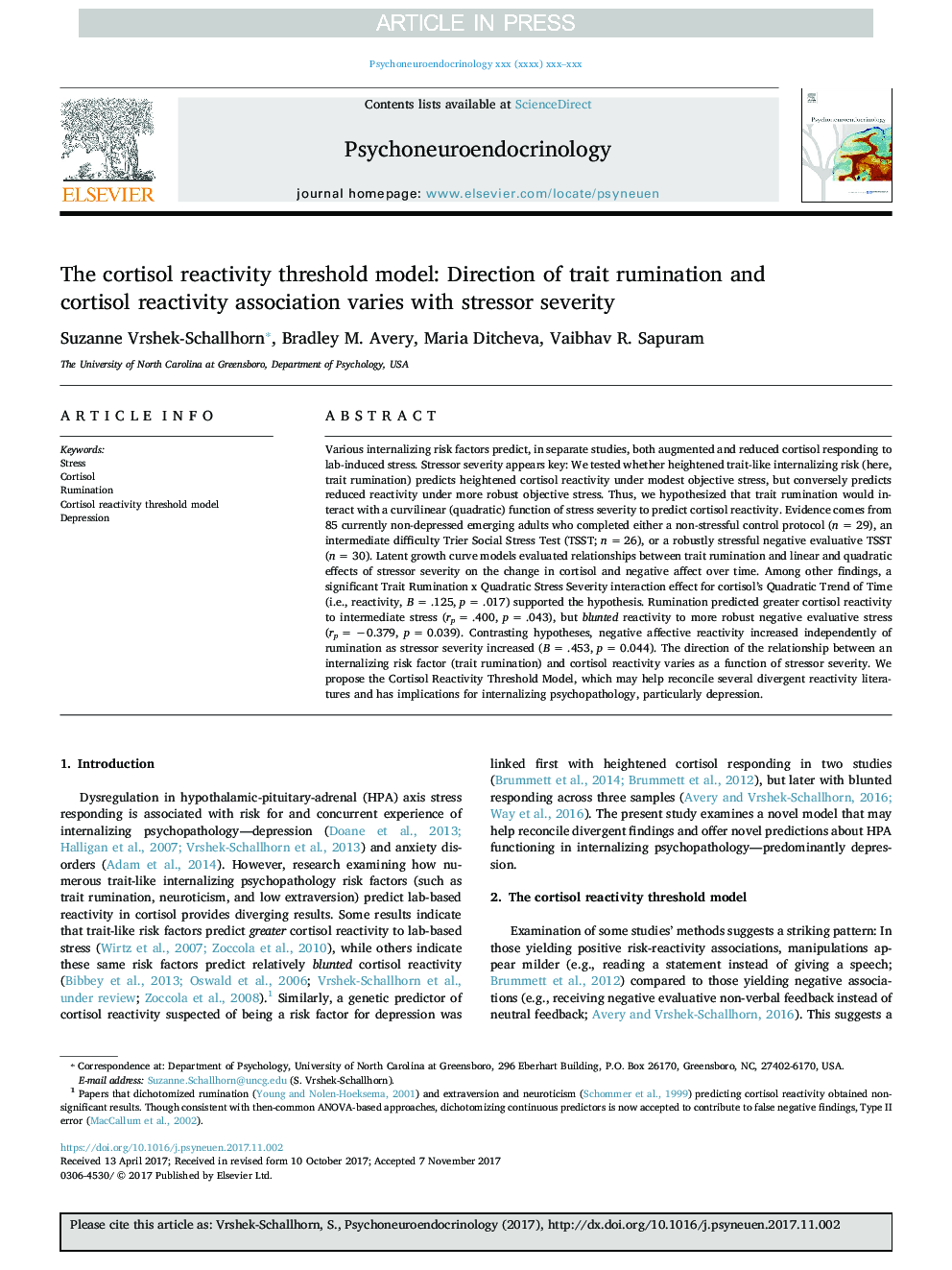| Article ID | Journal | Published Year | Pages | File Type |
|---|---|---|---|---|
| 6817640 | Psychoneuroendocrinology | 2018 | 10 Pages |
Abstract
Various internalizing risk factors predict, in separate studies, both augmented and reduced cortisol responding to lab-induced stress. Stressor severity appears key: We tested whether heightened trait-like internalizing risk (here, trait rumination) predicts heightened cortisol reactivity under modest objective stress, but conversely predicts reduced reactivity under more robust objective stress. Thus, we hypothesized that trait rumination would interact with a curvilinear (quadratic) function of stress severity to predict cortisol reactivity. Evidence comes from 85 currently non-depressed emerging adults who completed either a non-stressful control protocol (nâ¯=â¯29), an intermediate difficulty Trier Social Stress Test (TSST; nâ¯=â¯26), or a robustly stressful negative evaluative TSST (nâ¯=â¯30). Latent growth curve models evaluated relationships between trait rumination and linear and quadratic effects of stressor severity on the change in cortisol and negative affect over time. Among other findings, a significant Trait Rumination x Quadratic Stress Severity interaction effect for cortisol's Quadratic Trend of Time (i.e., reactivity, Bâ¯=â¯.125, pâ¯=â¯.017) supported the hypothesis. Rumination predicted greater cortisol reactivity to intermediate stress (rpâ¯=â¯.400, pâ¯=â¯.043), but blunted reactivity to more robust negative evaluative stress (rpâ¯=â¯â0.379, pâ¯=â¯0.039). Contrasting hypotheses, negative affective reactivity increased independently of rumination as stressor severity increased (Bâ¯=â¯.453, pâ¯=â¯0.044). The direction of the relationship between an internalizing risk factor (trait rumination) and cortisol reactivity varies as a function of stressor severity. We propose the Cortisol Reactivity Threshold Model, which may help reconcile several divergent reactivity literatures and has implications for internalizing psychopathology, particularly depression.
Keywords
Related Topics
Life Sciences
Biochemistry, Genetics and Molecular Biology
Endocrinology
Authors
Suzanne Vrshek-Schallhorn, Bradley M. Avery, Maria Ditcheva, Vaibhav R. Sapuram,
